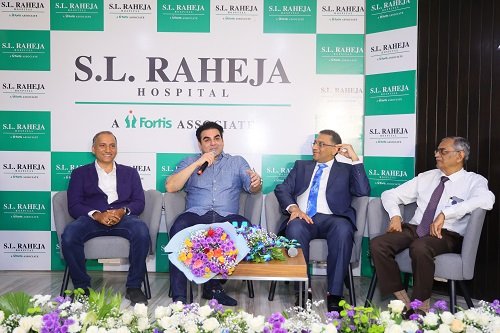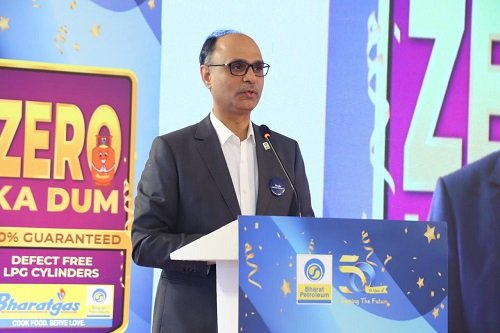How does one describe M.T. Vasudevan Nair? Respectfully called “MT”, he was primarily a writer who was widely admired across generations, and his works have remained bestsellers for more than half a century. In the industry and among cineastes, he commanded the respect of both serious auteurs and commercial filmmakers. As an editor, he was known for his keen sense of changing literary trends, identifying and publishing many young writers. He was also an avid reader who consistently followed contemporary writing at the international, and more importantly, national level. In all these fields, he painstakingly remained consistent and creative.
Writers, filmmakers, film lovers, and readers of all generations worshipped him. He always lived up to their expectations, and that is what gave an enviable aura to his persona and presence, everywhere. As a writer, he was at the cusp of early and high modernism in Malayalam, and so, was equally conversant and at ease with classical literature as well as the contemporary in Malayalam, across Indian literature, and around the globe.
MT won and sustained his popularity and credibility through a long and outstanding career in literature and film. His stories and novels continued to be bestsellers, collecting generations of dedicated readership. His stories and scripts were about the human condition in general and spanned genres. The titles of two of the most famous of MT’s novels happen to be Naalukettu (“The Legacy”, 1958) and Kaalam (“Time”, 1969), the first denoting a space (traditional Nair taravad or a large matrilinear family) and the second, time, both crucial to his narratives.
Most of his stories, especially the early ones, were set in and around his village (Kudallur) along the Nila river and depicted people caught in space-traps and time warps. They are wounded by time and haunted by space. Though many of his protagonists try to return to the past to reclaim it, they all fail miserably as they find themselves in a different time zone where nostalgia withers and space is bereft of meaning.
Also Read | M.T. Vasudevan Nair (1933-2024): An evocative storyteller who explored complexities of rural life
Such disconnect with time and space was also something that resonated with the sociopolitical and economic atmosphere of the time. Joint families were breaking apart and nuclear ones were struggling to take shape. Feudal and agrarian ecologies and economies were in disarray, triggering migrations to cities in search of livelihoods. There was also growing disillusion with Nehruvian dreams and nationalist hopes.
Unlike many of their contemporaries, his protagonists were neither idealists nor self-sacrificing valiant heroes. They were susceptible to the lures of the flesh and money. Their middle-class aspirations were frustrated by the changing ways of the world, whose vagaries cost them their ideals and loves. In MT’s world, men were always at the centre, and the destinies of women, who were much more rooted and resilient, were always entangled with men’s lust, greed, and frustrations. This estrangement with time and space in MT characters is not something abstract or philosophical like in most films and writings of the time, but very much place and time-bound. This is what makes MT a poignant chronicler of middle-class life and times.
Traversing the world of words and images
“Who are you raging against?”
“World, god, me.”
(Dialogue from Bandhanam)
MT entered films as a screenwriter with Murappennu (1965, directed by A. Vincent). His first directorial venture was Nirmalyam (“Offering”, 1973), a film that received critical acclaim. In a career spanning more than five decades, he worked with three generations of illustrious directors as a screenwriter, churning out box office hits with them all. He began with veteran directors like A. Vincent, P. Bhaskaran, K.S. Sethumadhavan, and P.N. Menon, then continued with I.V. Sasi, Hariharan, G.S. Panicker, and Bharathan, and finally with young directors like Pratap Pothen, Venu, and Kannan. Such prolificacy and creative longevity stand testimony both to his popular success and his ability to keep track of the changing trends, mix genres, and experiment with new themes. Although he scripted more than 70 films, he directed only a handful: Bandhanam (“Bond”, 1978), Varikkuzhi (“The Trap”, 1982), Manju (“Mist”, 1963), Kadavu (“The Ferry”, 1991), and Oru Cheru Punchiri (“A Slender Smile”, 2000).
There were several phases in MT’s film career. The early scripts (1960-1970) were centred around human drama within crumbling Nair taravads, consequent migration to the city, and struggles for survival there. (Murappennu, Pakalkinavu, Iruttinte Atmavu, Nagarame Nandi, Asuravithu, Olavum Theeravum, Nizhalattam, Kuttiedathi, Ekakini, Neelathamara).
It was in the 1980s that MT was most prolific and commercially successful. During this decade, an MT script was considered a sure box office hit. In this phase, MT worked with the most commercially successful filmmakers of the period like I.V. Sasi and Hariharan, and the narrative settings expanded to the city and urban life. Conflicts within middle-class families, turbulent man-woman relationships, lust, infidelity, and the various compromises and betrayals people perpetrate within family, society, and workplaces became more prominent in this period. (Kanyakumari, Idavazhiyile Poocha Mindapoocha, Oppol, Vilkanund Swapnangal, Thrishna, Uyarangalil, Aksharangal, Aarudam, Alkkoottathil Thaniye, Adiyozhukkukal, Idanilangal, Anubandham, Panchagni, Nakhakshathangal, Amritham Gamaya, Aranyakam, Thazhvaram, Rithubhedam, Vithukal, Utharam).
By the 1990s, MT’s narrative structures and concerns shifted to retelling of myths, legends, and historical themes and figures. Old age and death also began to figure in his scripts. (Vaishali, Oru Vadakkan Veeragadha, Perunthachan, Sadayam, Parinayam, Sukritham, Daya, Theerthadanam, Keralavarma Pazhassiraja).
If the protagonists in his early films are caught in personal dilemmas of survival, familial, and marital conflicts, in the next phase, they are trapped between ghosts from the past and lures of the present, with their relationships and desires traversing various worlds and states of being: home/away, dream/reality, mythic/historic. Most of these films, especially those directed by I.V. Sasi, are multi-starrers and have several subplots. In the third phase, the narratives become more tragic and melancholic with death looming over the horizon. There is also a sense of acceptance or coming to terms with life and destiny in this period.
MT the auteur
“Instead of the great oceans that carry unknown wonders in its depths, I prefer my Bharathapuzha river that flows like a tiny stream.”
Alhough he directed only a few films, they were all distinctively different, dealing with people thrown into certain circumstances and struggling to survive and find a place in the world and meaning to their existence. Nirmalyam is about a temple oracle (with a national award-winning performance by P.J. Antony) who painfully realises that he has no place in the changing world; every institution he believed in and held sacred—family, society, temple—falls apart. In Bandhanam, the protagonist is not at home in either the city or his ancestral village; he is a loner, not able to express or accept love. Wounded by the past, he is also unable to come to terms or settle scores with it. By the time he connects to the world around, it no longer needs him, and he is condemned to lifelong solitude.
Varikkuzhi is about a man’s desire to conquer the world and its pleasures. He finally finds himself trapped within its web, unable to untangle himself. Manju, set against an idyllic lake city, is about a woman’s unending wait for her lover, who never arrives. Like the repeating cycles of tourist seasons, her wait, too, spirals; like the mist looming over the lake, the world gradually grows bleak.
In Kadavu, MT returned to his favourite topos of the Nila river. It is about a ferryman and a runaway boy who seeks refuge at the ferry. For the old man who has spent his life ferrying people across, life is all about flows, ebbs, and tides. But for the brave youth who ventures out into the world, it is a coming-of-age experience. And he learns the hard way, through betrayals and disappointments.
Oru Cherupunchiri is one of the most poignant films about old age in Indian cinema, and the most pleasant of MT’s films. It is about the last days of an aged couple, who are at peace with themselves. They find happiness not in anything especially exciting or spectacular but in mundane, everyday things that make them bond with nature, people, and the world.
Looking back at MT’s scripts and films, one realises they chart changing times and mindscapes.
It was predominantly the world of men that MT films expressed, explored, and elaborated. We see the various facets of being a “man” in Kerala: as a karanavar (head of a family), father, husband, lover, or son, living within a joint or nuclear family, alone, amidst the community, or in the workplace. Invariably, he is not at peace with himself. He needs to prove his worth to himself and the world. But very few of MT’s protagonists manage to redeem themselves. The past is always a burden, a festering wound that never heals.
Many of MT’s protagonists want to return and make amends or settle scores, but they can never get a grip over things. The women and men occupy two different worlds in MT films. Women are often the target of, or counterpoint to, male ego, lust, respect, and love; they are much more resilient, ready to wait, follow their desires, make sacrifices, accept change, adapt to situations, make amends, and repent. Unlike the men, they are not stuck in time or space; they move on.
Many MT heroines seek love outside marriage, walk out of marriages, or cross social barriers to embrace pleasure (Ekakini, Edavazhiyille Poocha Mindapoocha, Varikkuzhi, Parinayam, Adiyozhukkukal). They seek refuge in memory and struggle to survive, but they always accept their fate and carry on with their lives. But men are caught in the web of time; their own ego mar their way, making it impossible for them to accept the other and nurture a life together.
Also Read | M.T. Vasudevan Nair at 90: Maverick maestro of words and frames
One remarkable feature that stands out about MT’s work is his unrelenting belief in democratic liberty and the Nehruvian ideals of secularism and modernity. Even though most of his well-known stories and films are set in traditional Nair taravads, he never idealised or glorified them, unlike many of his younger colleagues in the post-1990s who were nostalgic about feudal, casteist heritage. MT abhorred equally the feudal value system and modern, consumerist greed. He always believed in freedom of expression and the plural, cosmopolitan legacies of our culture—something that gives his works contemporary gravity and resonance.
MT always considered himself primarily as a writer, with all the grace and respect it commanded. Even while occupying positions of power and heading academies, he never bowed before power, thus asserting the dignity of the writer. As a writer and filmmaker, he was intensely and constantly concerned about craft, about which he wrote very perceptively. He was also extremely critical of his own work.
With the departure of MT, Kerala has lost not only one of its finest writers and filmmakers, but also the last public intellectual. Although he was reticent by nature and spoke sparsely and sparingly, he never minced words when he chose to speak. His words were taken seriously across the diverse and often divisive political, religious, and social spectrum of Kerala. Whenever he had to talk back to power, he took strong and unambiguous positions, especially about social and ecological issues, like the people’s struggle against a proposed atomic power plant at Peringome in 1992, the rights of tribal people, the struggle against water and air pollution against the Mavoor Gwalior Rayon factory in Calicut, or any kind of autocratic tendencies in contemporary politics.
MT will be read and remembered as a writer, scenarist, and filmmaker for long, as one who chronicled the turbulent, internal Malayalee life, digging into his own world to explore the human condition.
C.S. Venkiteswaran is a film critic and documentary filmmaker based in Kochi.



